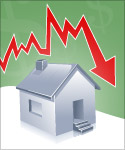The financial world is abuzz with anticipation as two of the leading financial institutions, Citigroup Inc. and JPMorgan Chase & Co., have revised their forecasts for the Federal Reserve's interest-rate cuts. The revisions come in the wake of robust employment data, prompting a shift in expectations and a reevaluation of the economic landscape.
Citigroup Inc., initially predicting a rate cut as early as July, has now pushed back its forecast to September. This adjustment is a response to the unexpectedly strong job growth reported in May, which saw an addition of 272,000 new jobs, surpassing consensus estimates. The firm now anticipates a series of rate reductions totaling 75 basis points to occur in September, November, and December.
JPMorgan Chase & Co., on the other hand, has set its sights on November for the first rate cut. This projection aligns with the bank's cautious approach, considering the Federal Reserve's current stance and the recent economic indicators.
The Federal Reserve has maintained its benchmark interest rates at a range of 5.25% to 5.50% since the previous year, adopting a wait-and-see approach to further rate hikes. The central bank's decision to keep rates steady reflects its commitment to ensuring that inflation trends towards its 2% target. Despite the pause, Fed Chairman Jerome Powell has emphasized that the central bank is prepared to adjust rates if inflation's decline stalls.
The implications of these forecasts are significant for investors, policymakers, and the general public. Interest-rate cuts can stimulate economic growth by making borrowing cheaper, thus encouraging spending and investment. However, they can also signal concerns about the economy's strength and the need for intervention to prevent a downturn.
As the debate continues, the financial markets remain vigilant, closely monitoring the Federal Reserve's policy statements and economic forecasts. The upcoming Federal Open Market Committee (FOMC) meetings will be critical in shaping the future direction of monetary policy and, by extension, the trajectory of the U.S. economy.
Factors Influencing Federal Reserve Interest-Rate Predictions
The anticipation surrounding the Federal Reserve's interest-rate decisions is palpable, as these can have far-reaching effects on the economy. Financial institutions like Citigroup Inc. and JPMorgan Chase & Co. closely monitor a variety of factors to make their predictions. Here are some of the key elements that influence these forecasts:
- Economic Indicators: Economic indicators are statistics about economic activities that allow analysis of economic performance and predictions of future performance. One such indicator is the employment data, which can signal the health of the economy. For instance, strong job growth might suggest a robust economy, potentially delaying the need for rate cuts.
- Inflation Rates: The Federal Reserve aims to maintain inflation near its 2% target. Inflation rates can influence the timing and size of interest rate adjustments. If inflation is too high, the Fed might increase rates to cool down the economy. Conversely, if inflation is lower than expected, the Fed may cut rates to stimulate spending and investment.
- Central Bank Policies: The policies and statements from the Federal Reserve itself are significant. The Fed's Open Market Committee meetings and the minutes of these meetings are scrutinized for hints of future policy changes. The Fed's approach to rates often reflects its latest assessments of economic conditions and risks.
- Global Market Trends: Global economic trends can also impact the Fed's decisions. For example, economic slowdowns in other parts of the world can affect the U.S. economy and, by extension, influence the Fed's stance on interest rates.
- Domestic and International Political Events: Political stability and events can have immediate effects on the market's expectations for interest rates. Trade policies, election results, and geopolitical tensions can all necessitate a reevaluation of rate forecasts.
- Consumer Behavior: Consumer spending is a significant component of the economy. Changes in consumer confidence and spending can influence the Fed's rate decisions. If consumers are spending less, the Fed might cut rates to encourage borrowing and, consequently, spending.
- Business Investment: The level of business investment can also sway the Fed's interest rate decisions. If businesses are hesitant to invest, the Fed might lower rates to make borrowing more attractive and stimulate business expansion.
- Financial Market Conditions: The stock market and bond yields provide insights into investor expectations and can influence the Fed's rate decisions. A falling stock market or declining bond yields might prompt the Fed to cut rates to support economic growth.
These factors are interrelated and must be considered collectively to understand the complex dynamics at play. Financial institutions and analysts use a combination of these indicators to forecast the Federal Reserve's moves. As the economic landscape evolves, so too will the factors influencing the Fed's decisions, making the task of forecasting a challenging yet vital endeavor for economic stakeholders.
For those looking to stay ahead of the curve, keeping an eye on these factors is crucial. They not only help predict interest rate changes but also provide a glimpse into the overall health and direction of the economy.
ALSO READ:
- More Predictions Point Towards Higher for Longer Interest Rates
- Interest Rate Predictions for Next 2 Years: Expert Forecast
- Interest Rates Predictions for 5 Years: Where Are Rates Headed?
- Mortgage Rate Predictions for Next 5 Years
- Mortgage Rate Predictions for the Next 2 Years
- Surprise Job Growth Throws Interest Rate Predictions into Disarray



